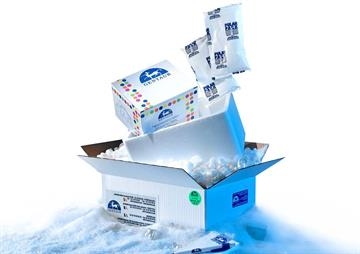Bovine FGF9 PicoKine ELISA Kit

Bovine FGF9 PicoKine ELISA Kit
950 €
In Stock
quantity
product details
Catalog number: 544 - MBS1751032-96StripWells
Product Category: Business & Industrial > Science & Laboratory
MyBiosourceGentaur
Size: 96-Strip-Wells
Related Products
EK0348
Human FGF9 PicoKine ELISA Kit
For quantitative detection of human FGF9 in cell culture supernates, cell lysates, serum and plasma (heparin, EDTA).
1024.8 €
OKBB00144
FGF9 ELISA Kit (Human) (OKBB00144)
Description of target: Fibroblast growth factor-9 (FGF-9) is a steroid-regulated mitogen and survival factor for nerve and mesenchymal cells.1 The human FGF-9 cDNA cloned by using oligonucleotide probes encodes a polypeptide consisting of 208 amino acids. Sequence similarity to other members of the FGF family has been estimated to be around 30%.2 FGF-9 is an autocrine estromedin endometrial stromal growth factor that plays roles in cyclic proliferation of uterine endometrial stroma.3 FGF9 is produced and secreted by the prostatic stromal cells. It is a potent mitogen for both prostatic epithelial and stromal cells in culture. FGF9 is an abundant secreted growth factor that can act as both a paracrine mitogen for epithelial cells and an autocrine mitogen for stromal cells. Overexpression of this paracrine and autocrine growth factor may play an important role in the epithelial and stromal proliferation in benign prostatic hyperplasia.4 As a result of glycosylation, the molecular mass is 25-27KDa.;Species reactivity: Human;Application: ELISA;Assay info: ;Sensitivity: < 15 pg/ml
1206.4 €
OKBB00700
FGF9 ELISA Kit (Bovine) (OKBB00700)
Description of target: Fibroblast growth factor-9(FGF-9) is a steroid-regulated mitogen and survival factor for nerve and mesenchymal cells. The Bovine FGF-9 cDNA cloned by using oligonucleotide probes encodes a polypeptide consisting of 208 amino acids. Sequence similarity to other members of the FGF family has been estimated to be around 30%. FGF-9 is an autocrine estromedin endometrial stromal growth factor that plays roles in cyclic proliferation of uterine endometrial stroma. FGF9 is produced and secreted by the prostatic stromal cells. It is a potent mitogen for both prostatic epithelial and stromal cells in culture. FGF9 is an abundant secreted growth factor that can act as both a paracrine mitogen for epithelial cells and an autocrine mitogen for stromal cells. Overexpression of this paracrine and autocrine growth factor may play an important role in the epithelial and stromal proliferation in benign prostatic hyperplasia.4 As a result of glycosylation, the molecular mass is 25-27KDa.;Species reactivity: Bovine;Application: ELISA;Assay info: ;Sensitivity: <15pg/ml
1206.4 €
OKBB00701
FGF9 ELISA Kit (Horse) (OKBB00701)
Description of target: Fibroblast growth factor-9(FGF-9) is a steroid-regulated mitogen and survival factor for nerve and mesenchymal cells. The horse equine FGF-9 cDNA cloned by using oligonucleotide probes encodes a polypeptide consisting of 208 amino acids. Sequence similarity to other members of the FGF family has been estimated to be around 30%. FGF-9 is an autocrine estromedin endometrial stromal growth factor that plays roles in cyclic proliferation of uterine endometrial stroma. FGF9 is produced and secreted by the prostatic stromal cells. It is a potent mitogen for both prostatic epithelial and stromal cells in culture. FGF9 is an abundant secreted growth factor that can act as both a paracrine mitogen for epithelial cells and an autocrine mitogen for stromal cells. Overexpression of this paracrine and autocrine growth factor may play an important role in the epithelial and stromal proliferation in benign prostatic hyperplasia.4 As a result of glycosylation, the molecular mass is 25-27KDa.;Species reactivity: Horse;Application: ELISA;Assay info: ;Sensitivity: <15pg/ml









